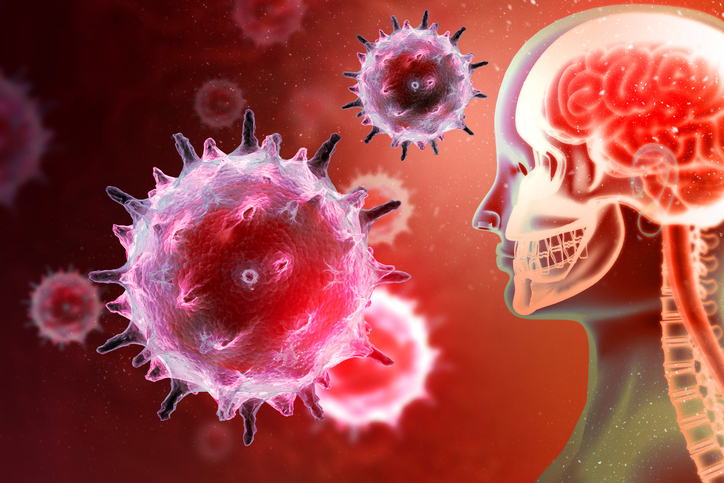Of 32 patients, two had ocular complications and three had cerebral venous thrombosis.
Primary infection with HHV-7, like that for HHV-6B, typically is acquired in the first three years of life, and has a similar clinical presentation: febrile rashes, febrile seizures and even exanthem subitem—clearly associated with HHV-7 rather than with HHV-6B.
An Iranian team reviewed the literature on HHV-7 meningitis, to examine its similarity to HHV-6B meningitis. The team restricted its systematic review to articles in which meningitis was diagnosed by established criteria, HHV-7 infection was established by PCR (sometimes supplemented by serology), and HHV-6 infection was ruled out by negative results on PCR. Altogether the review included 9 articles—6 retrospective studies and 3 case reports—including 32 patients.
The cases were generally children and teenagers, although a few were adults: the age ranged from 11 months to 50 years of age. 60% were males. Many were immunocompromised, but some were immunocompetent. The presenting symptoms were fever and headache, and occasionally rash and seizure. Spinal fluid revealed increased numbers of lymphocytes and a normal or slightly elevated protein concentration. In the few cases that performed serologic studies, all but one appeared to involve reactivated virus (in one case, IgM antibodies, but not IgG antibodies, were present).
One patient had unilateral papilledema that resolved with no complications, and another had optic neuritis with bilaterally decreased vision. In one report, three patients had cerebral venous thrombosis, detected by MRI.
There are no approved antiviral treatments for HHV-7, and the antivirals that work for HHV-6B are significantly less effective or ineffective for HHV-7 (Yoshida 1998, De Clercq 2001). The reports that did mention treatment included 16 patients, only 3 of whom received antiviral treatment. Past studies have reported that HHV-7 is weakly sensitive to cidofovir and foscarnet but insensitive to both acyclovir and ganciclovir in vitro (Madan 2019).
In conclusion, HHV-7 may occasionally mimic HHV-6B in the clinical syndromes it produces, including meningitis. In the past, there has been some question as to whether putative “HHV-7 meningitis” is actually produced by the transactivation of HHV-6B; since this study included only people with HHV-7, and not HHV-6B, detected by PCR, it seems likely that HHV-7 infection, alone, can cause meningitis.
While the small number of cases in the literature suggests that HHV-7 meningitis is a very infrequent event, it is possible that so few cases have been reported because few attempts have been made to diagnose HHV-7. The increasing use of multiplex PCR-based assays of spinal fluid that include HHV-7 is likely to better define the frequency and severity of this condition.
Read the full article: Yarmohammadi 2023

